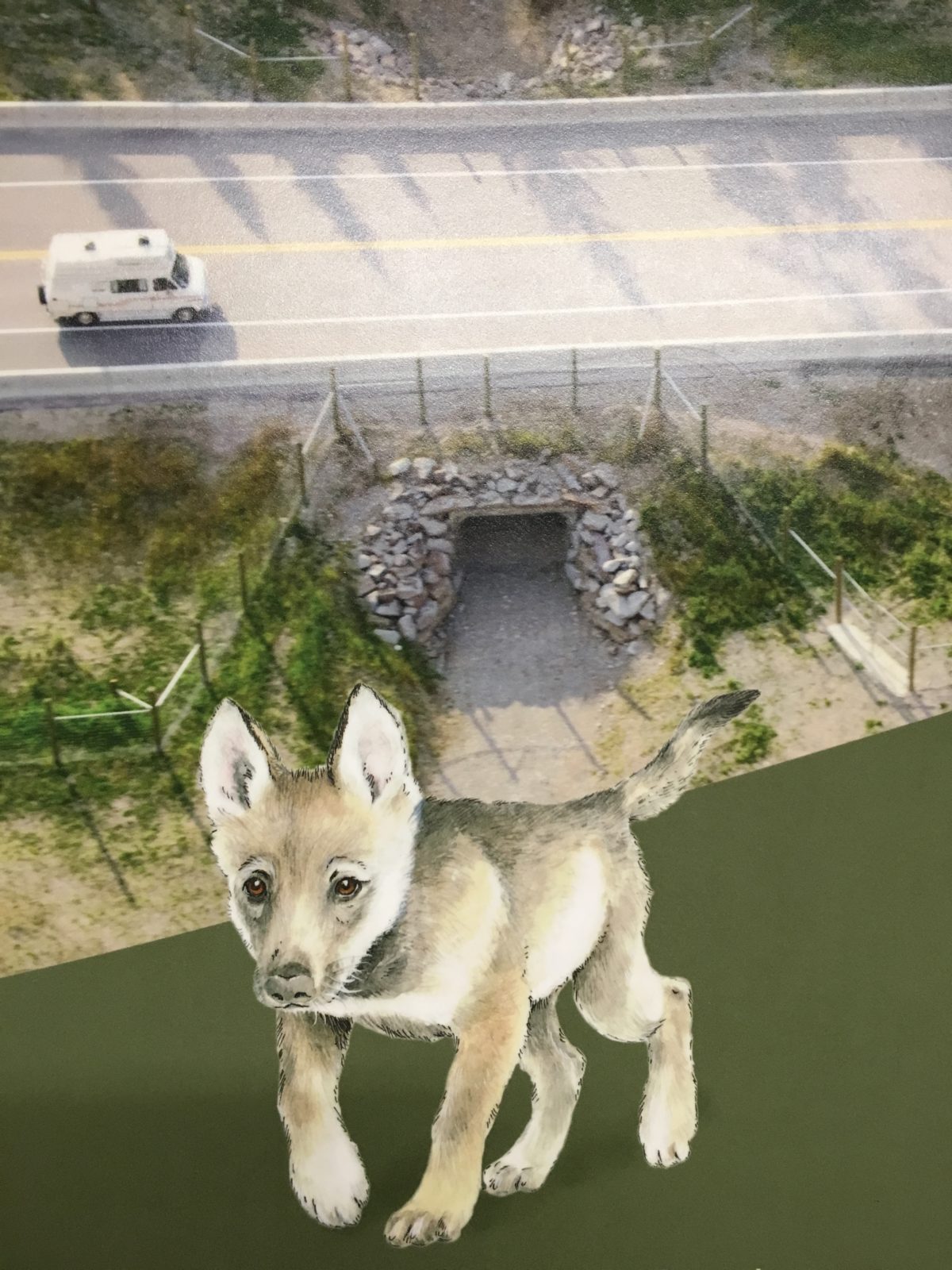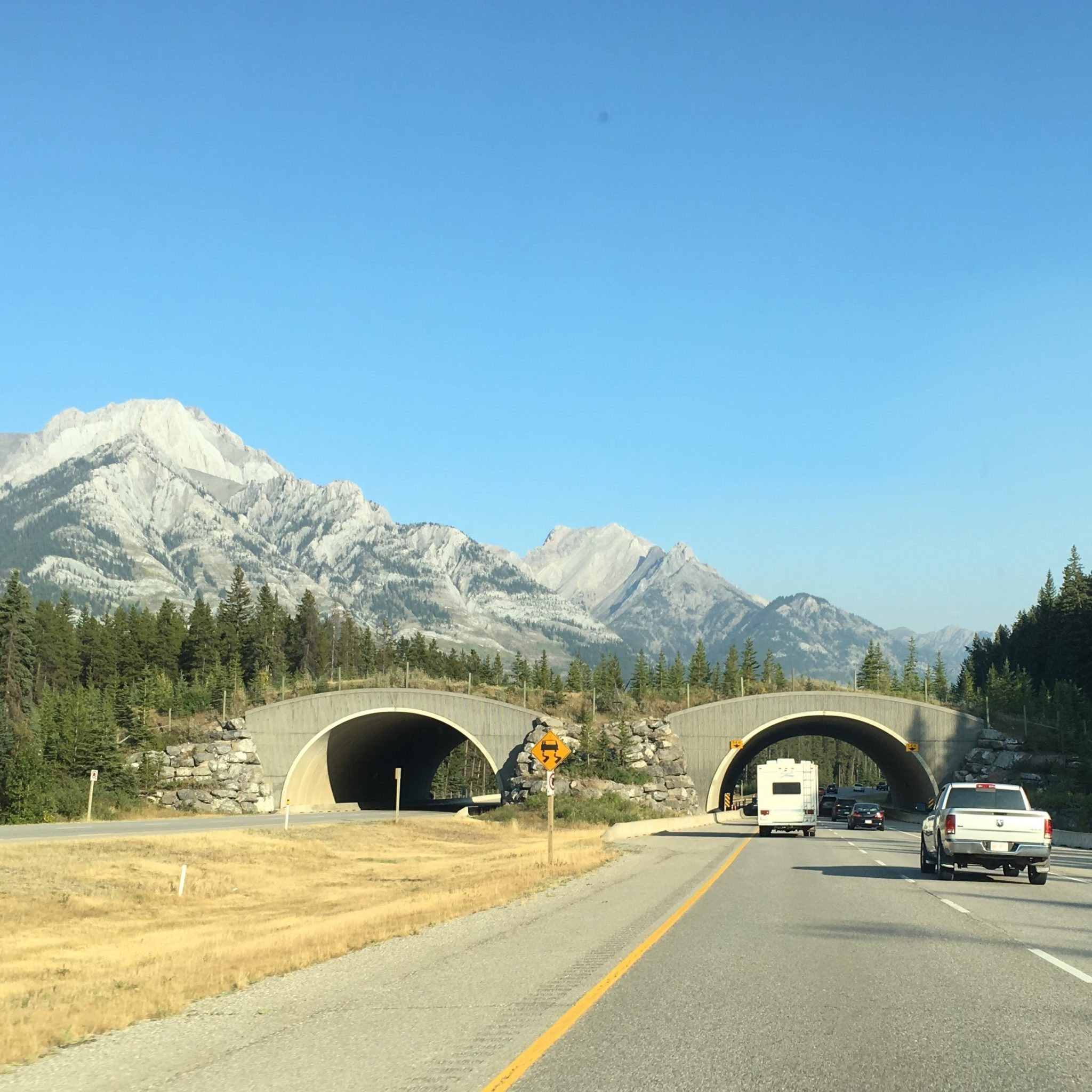Banff National Park in Alberta, Canada, and the surrounding Canadian National Parks are world-renowned for their mountains, rivers and lakes, glaciers, and wildlife. Yet, they are also leading the world in something you may have never even known existed: animal crossing overpasses and underpasses.
The Best Idea In Wildlife Conservation You Didn’t Know Existed:
Animal crossing overpasses and underpasses – what are they are and how do they work?
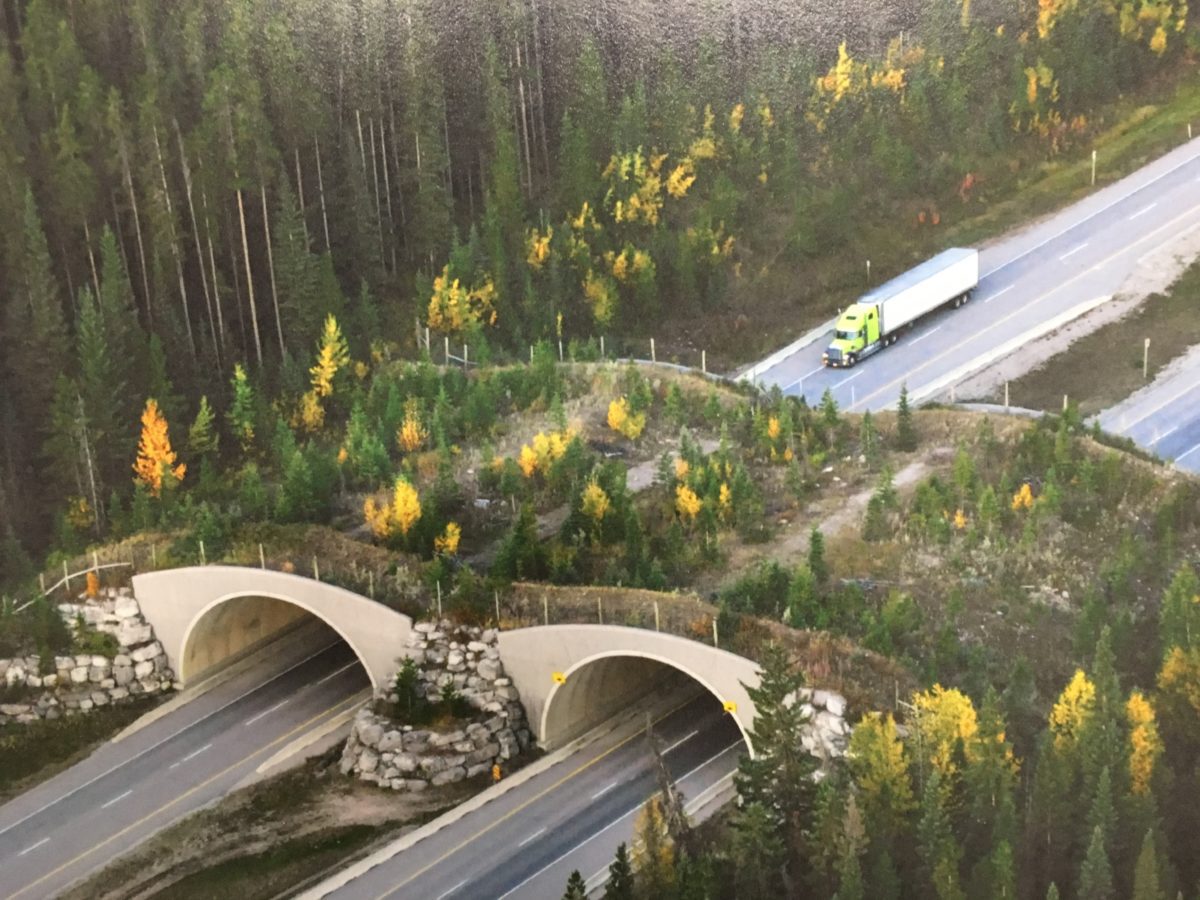
Animal overpass
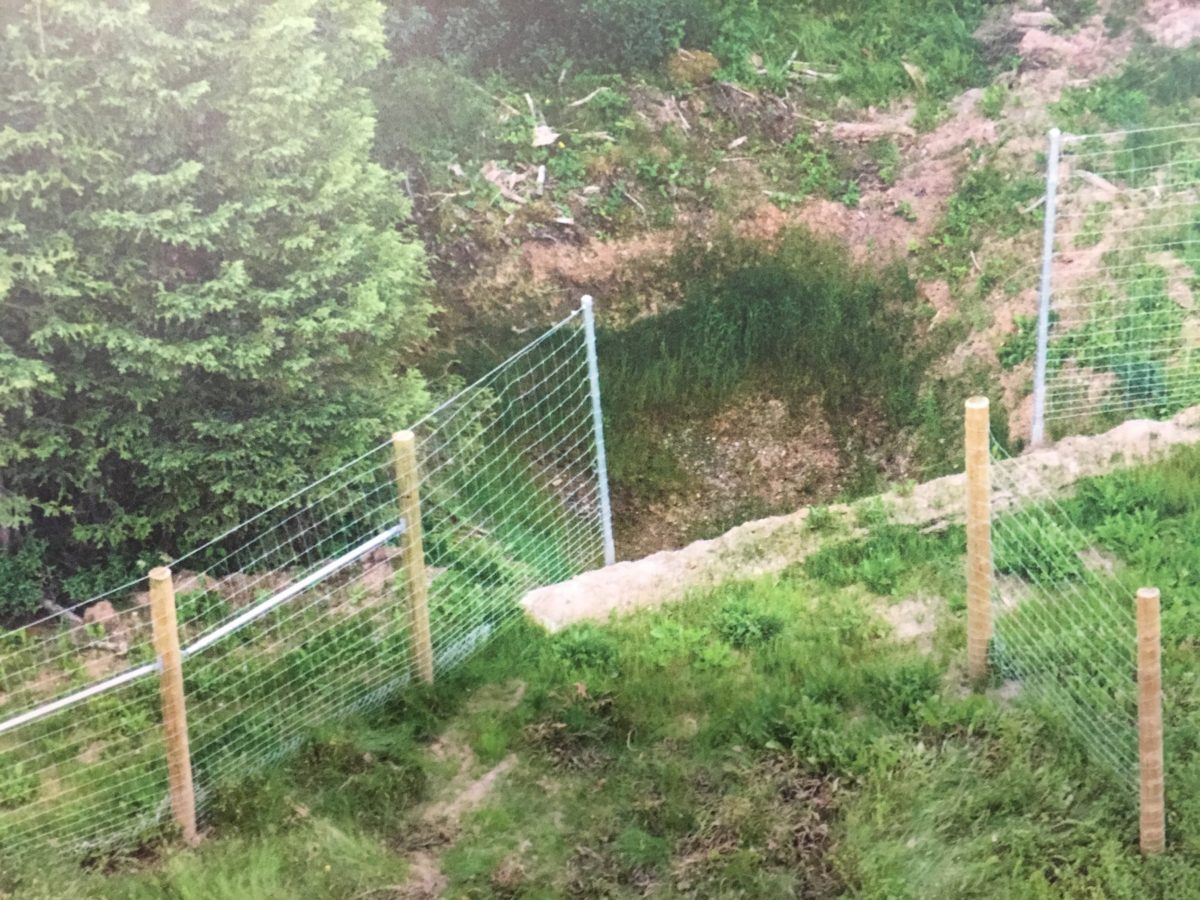
Entrance to an underpass
Why Wildlife Crossings Are Needed:
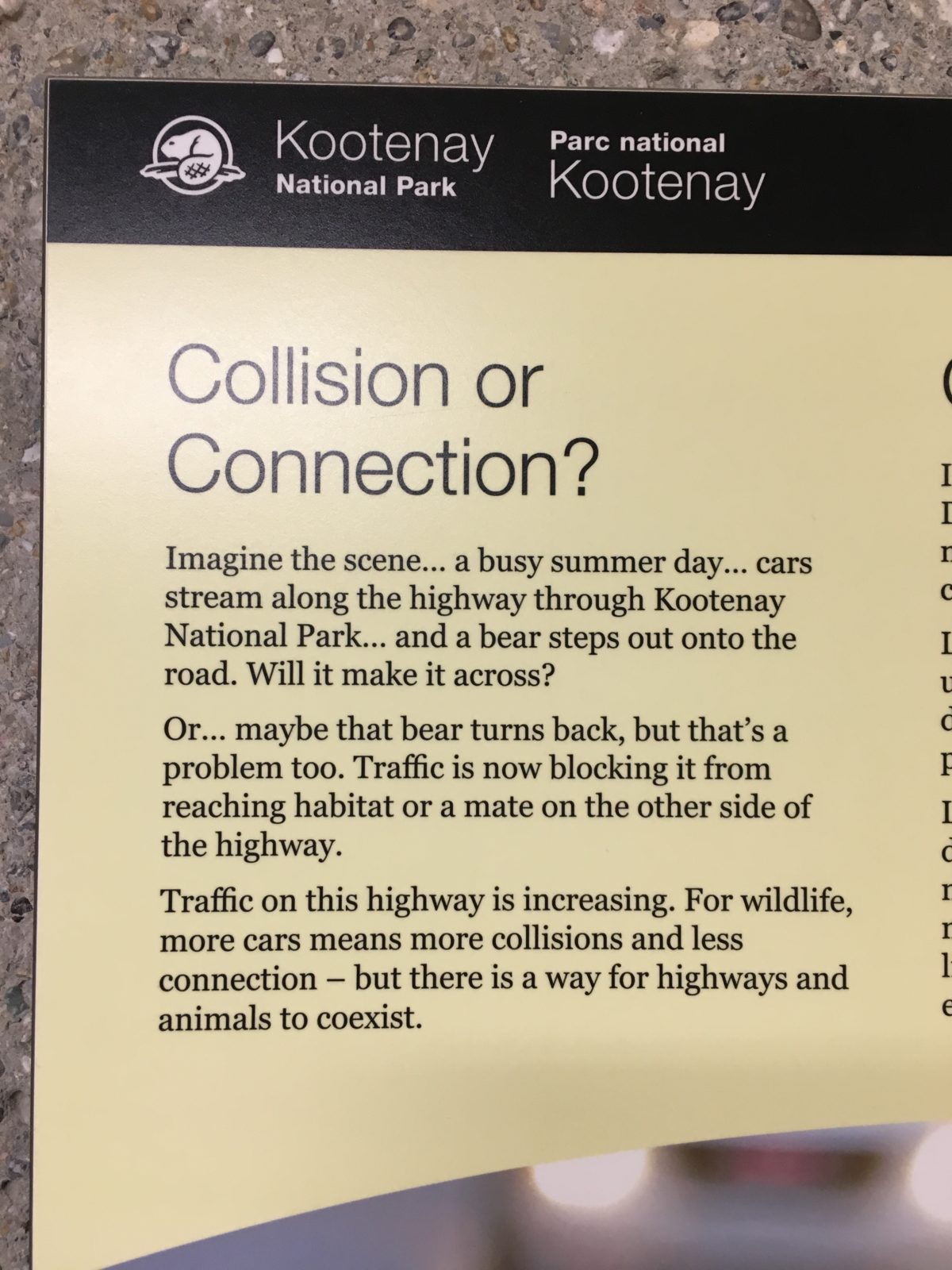
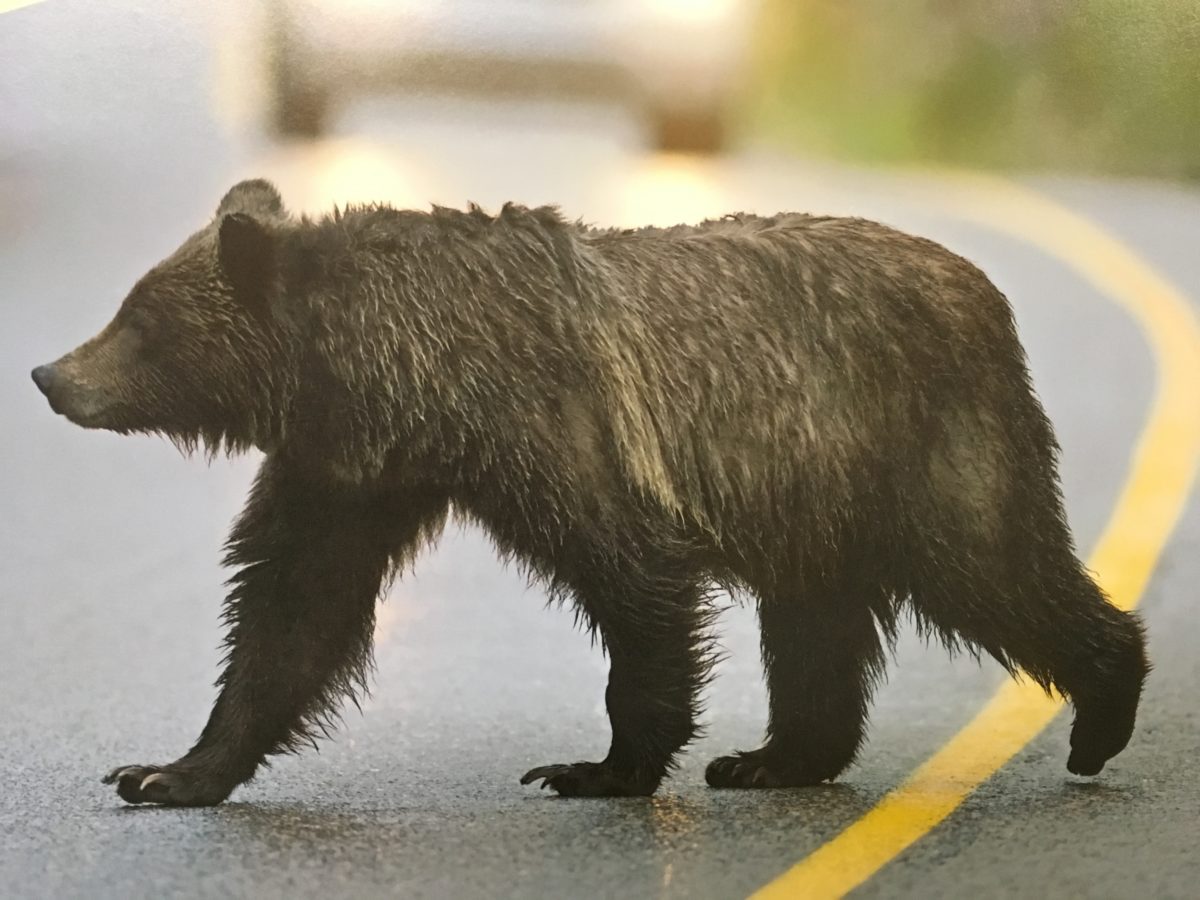
A sight you may not see in Banff National Park – and that’s a good thing
Wildlife Crossings: Overpasses and Underpasses
There are 6 overpasses in Banff National Park and 38 underpasses that run under the Trans-Canada Highway. There is also an underpass in Yoho National Park and a brand new one in Kootenay National Park.
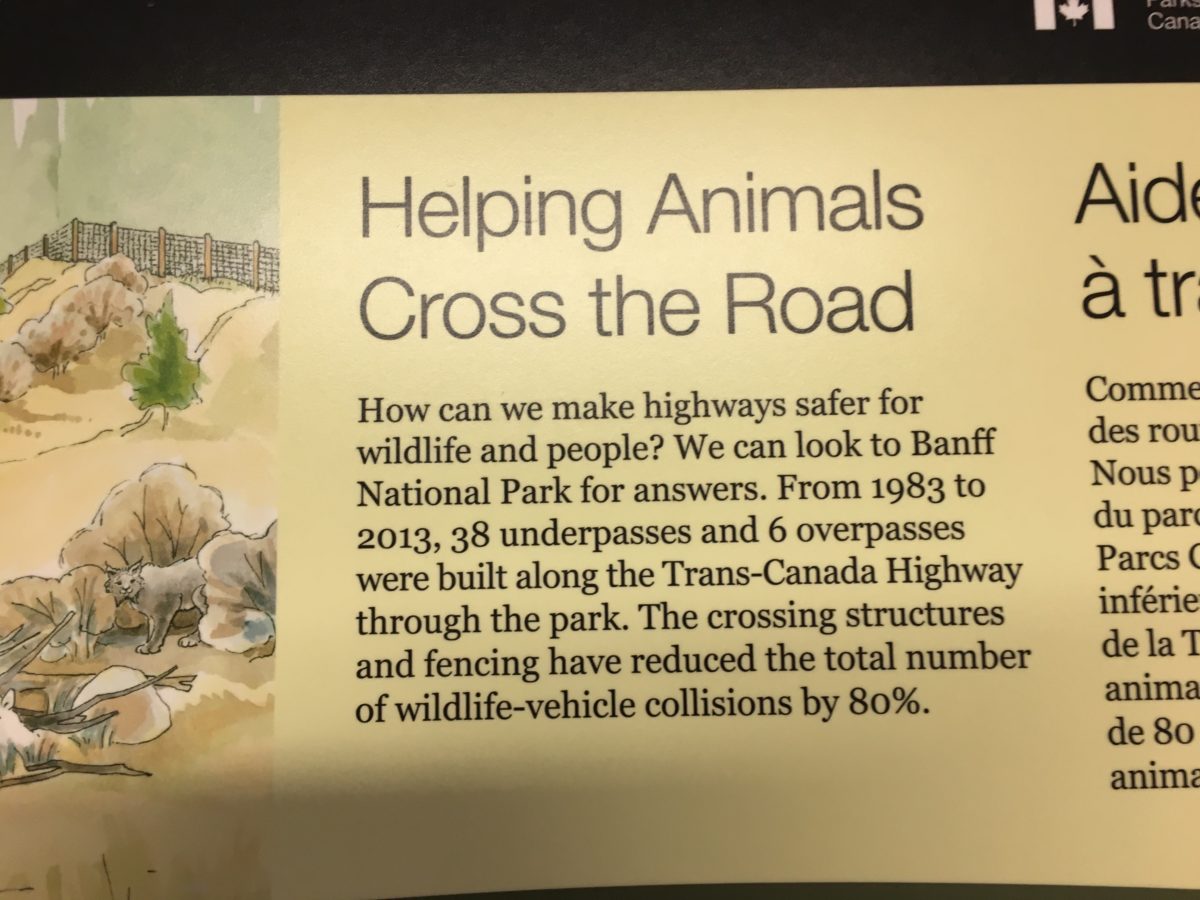
The Kootenay National Park Underpass Replica:
There is a replica of an underpass built at Radium Hot Springs in British Columbia.
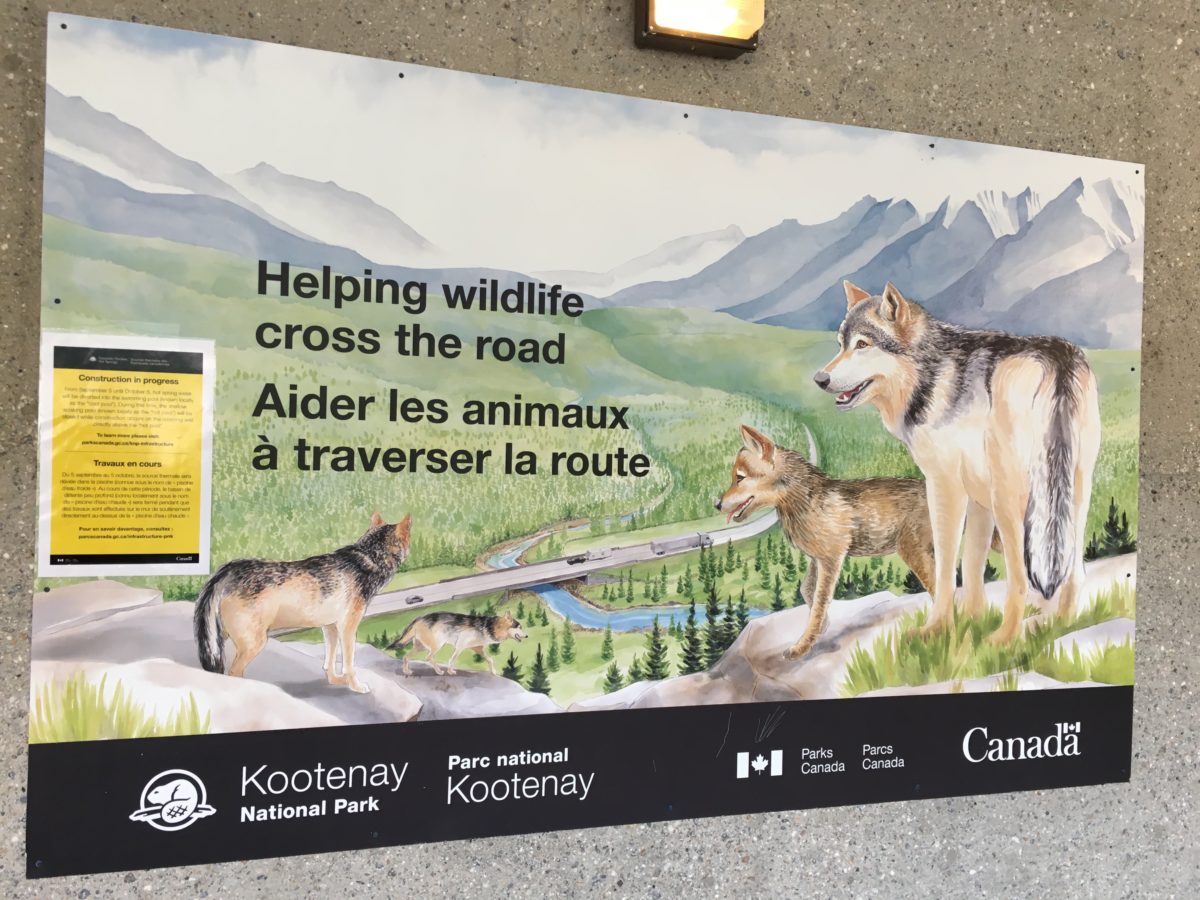
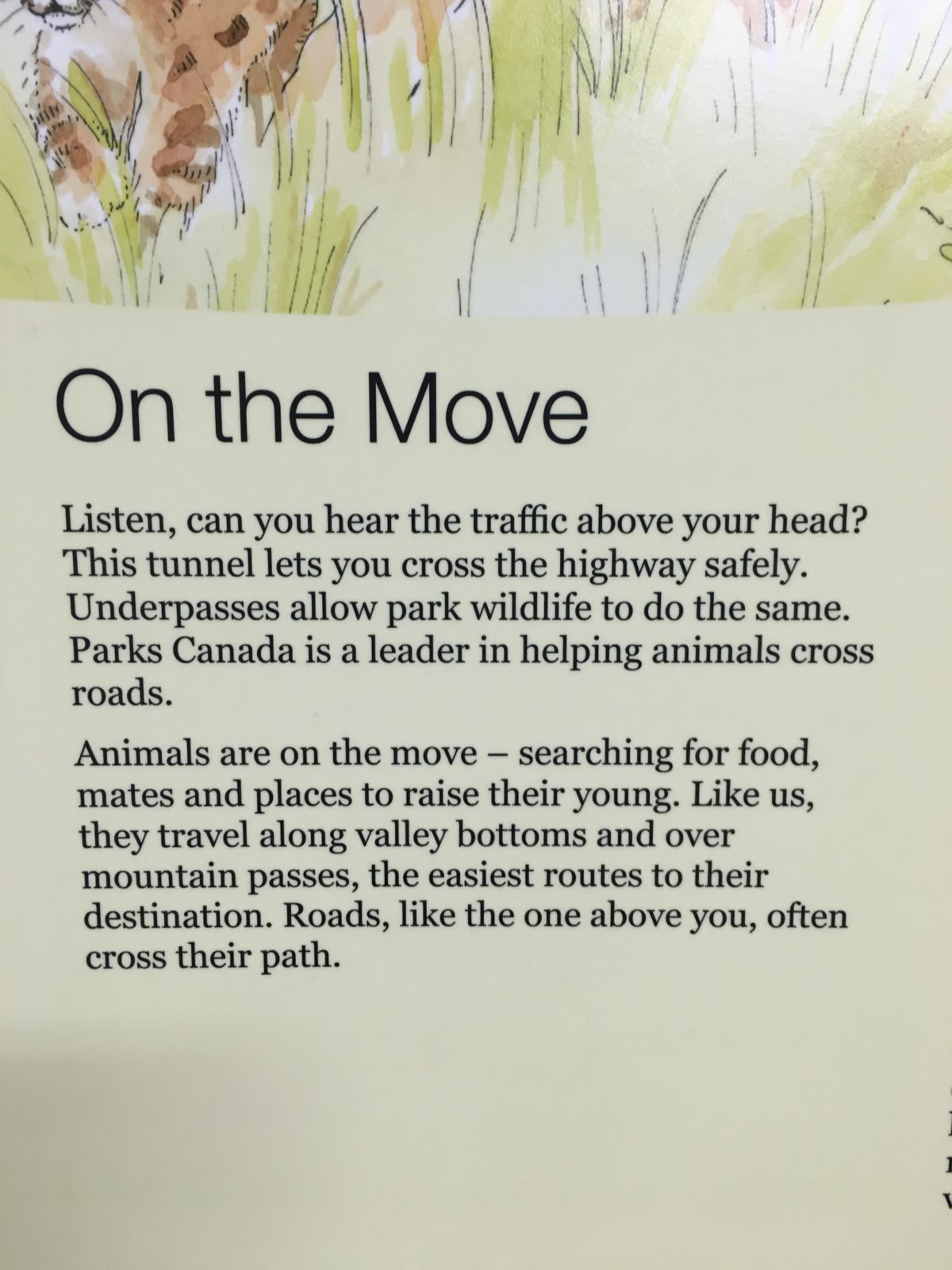
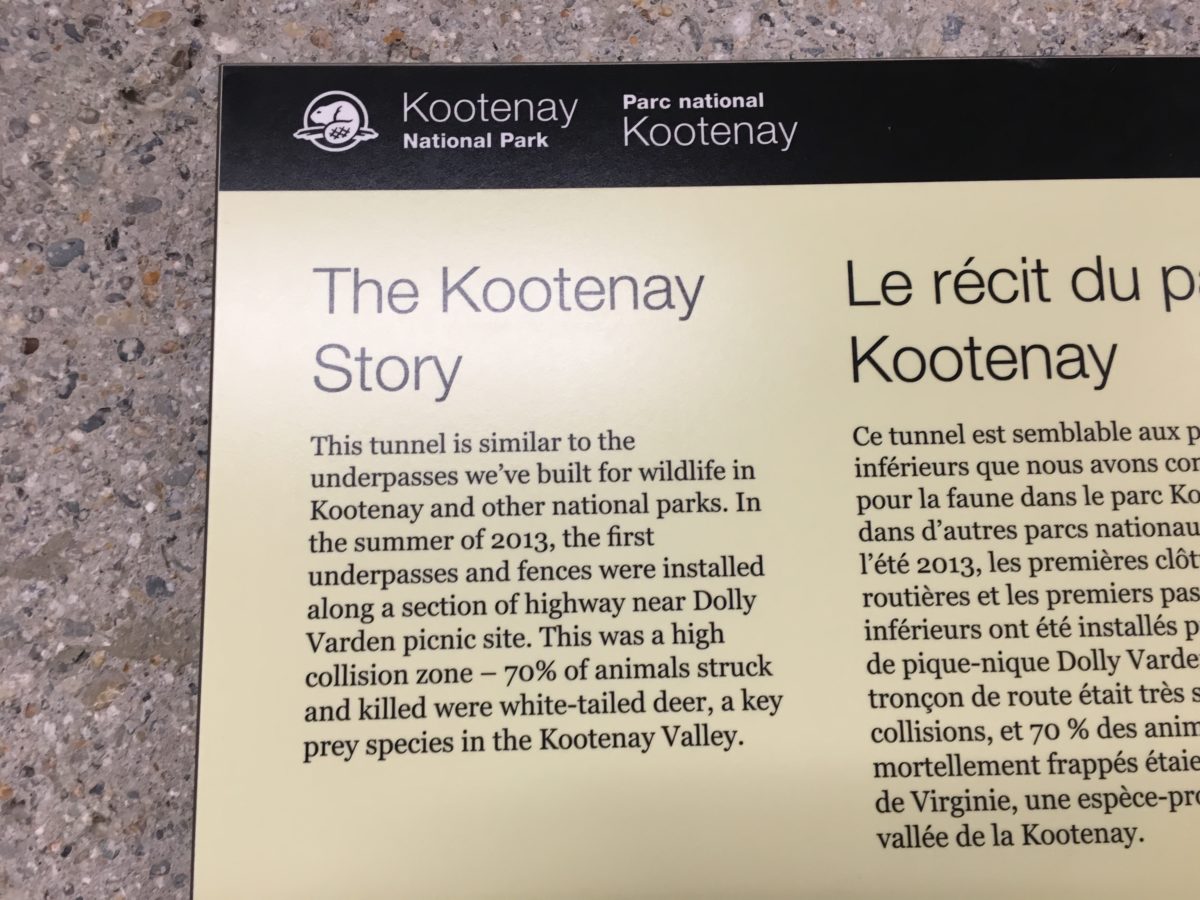
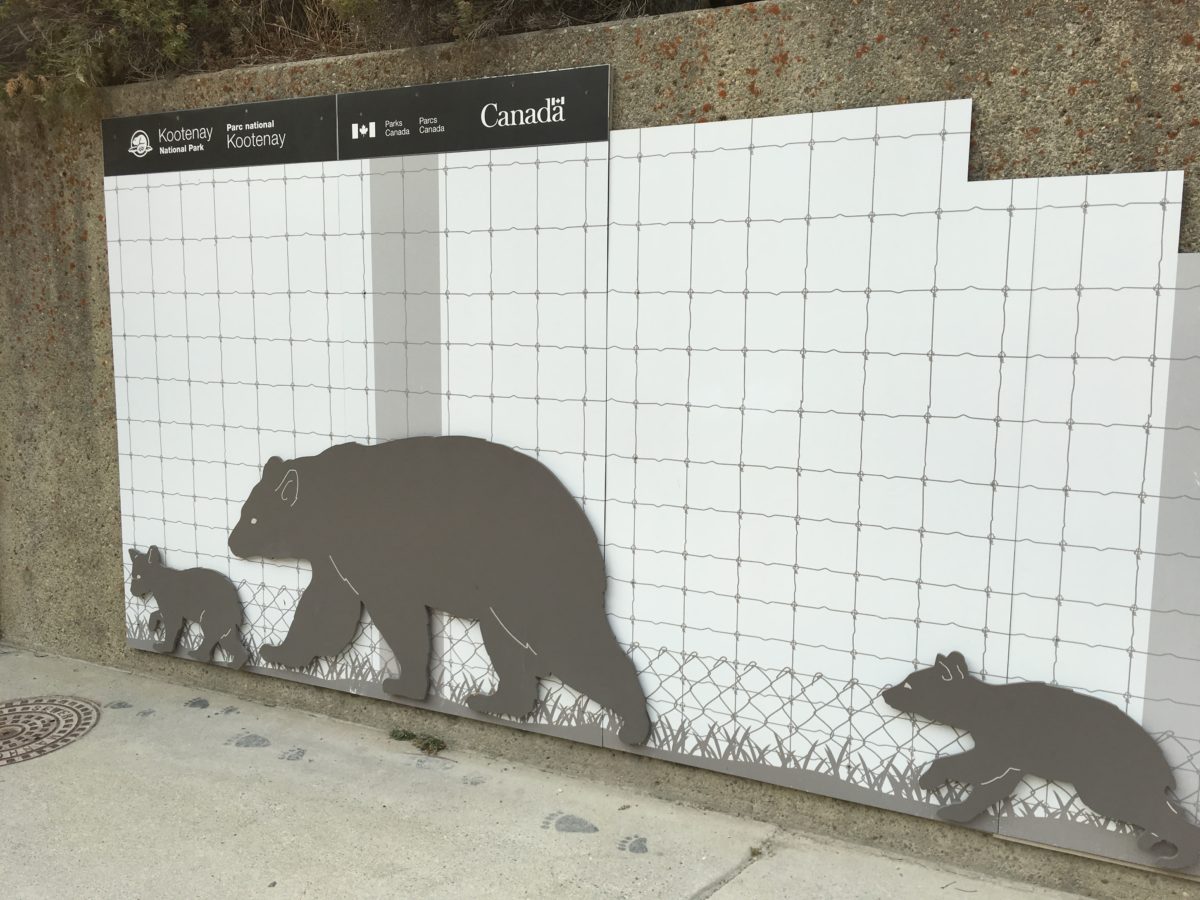
Kootenay underpass replica at Radium Hot Springs
The Crossings Work
Since the crossings have been installed, animal collisions have been reduced by a whopping 80%. For deer and elk alone, collisions have declined by 96%!
Since 1996, large mammals have been recorded using the wildlife crossings more than 150,000 times. Species known to use the crossings include grizzly and black bears, wolves, coyotes, cougars, moose, elk, deer, bighorn sheep, and even wolverine and lynx.
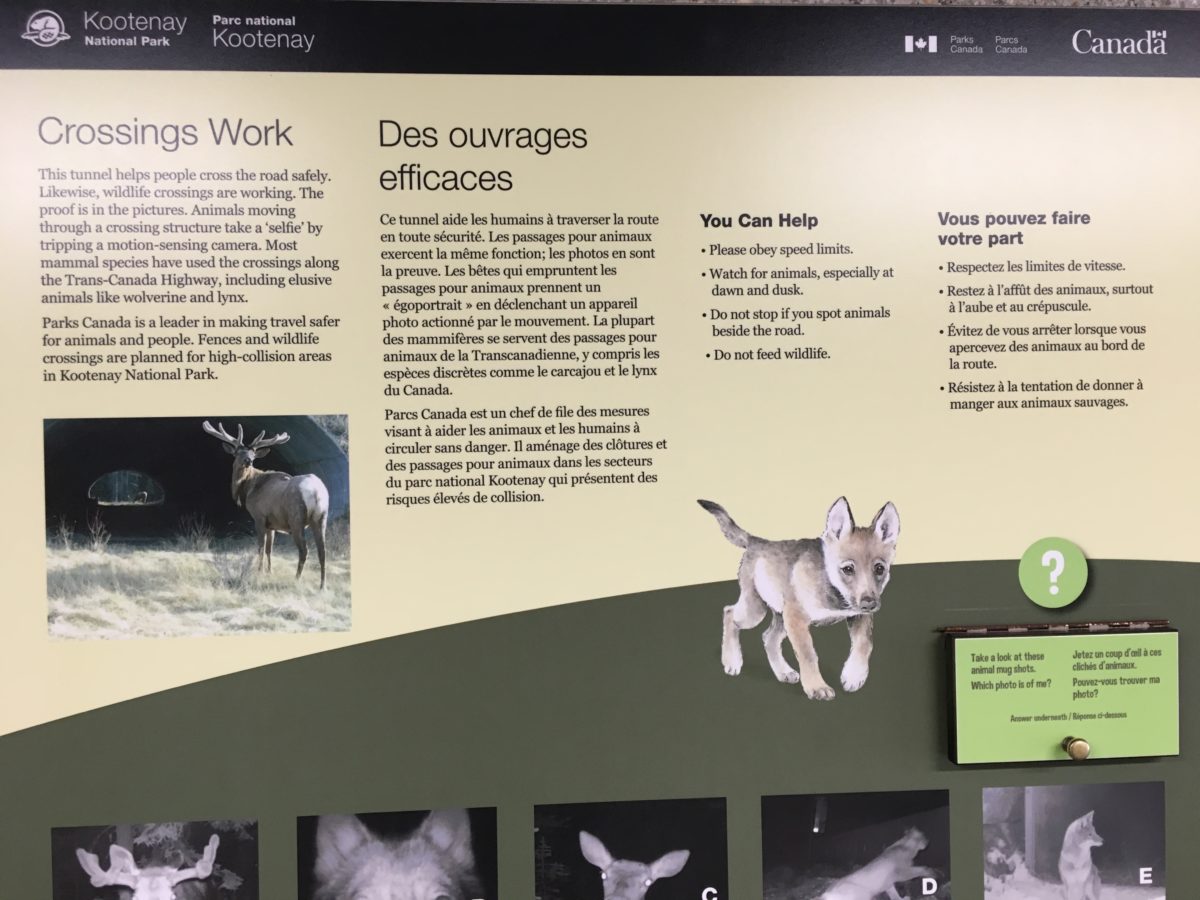
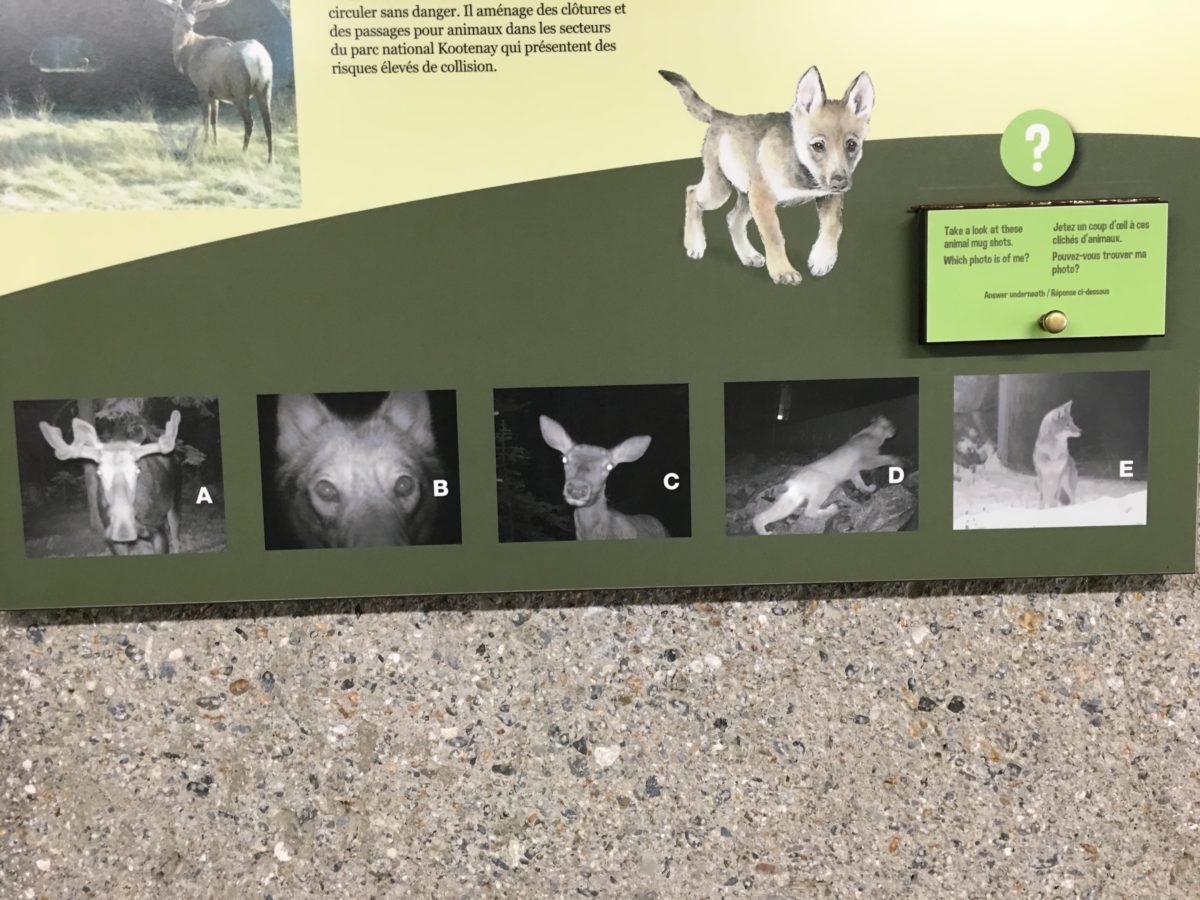
Familiar faces captured on camera using the overpasses and underpasses
Learning From Trial and Error: The Humans
Since 1983, Parks Canada has been studying how best to construct crossings that animals will actually use. Through a series of trial and errors, Parks Canada has tweaked their crossings to customize them to the needs and preferences of each animal to make them more intuitive and feel safe enough to use the crossings correctly.
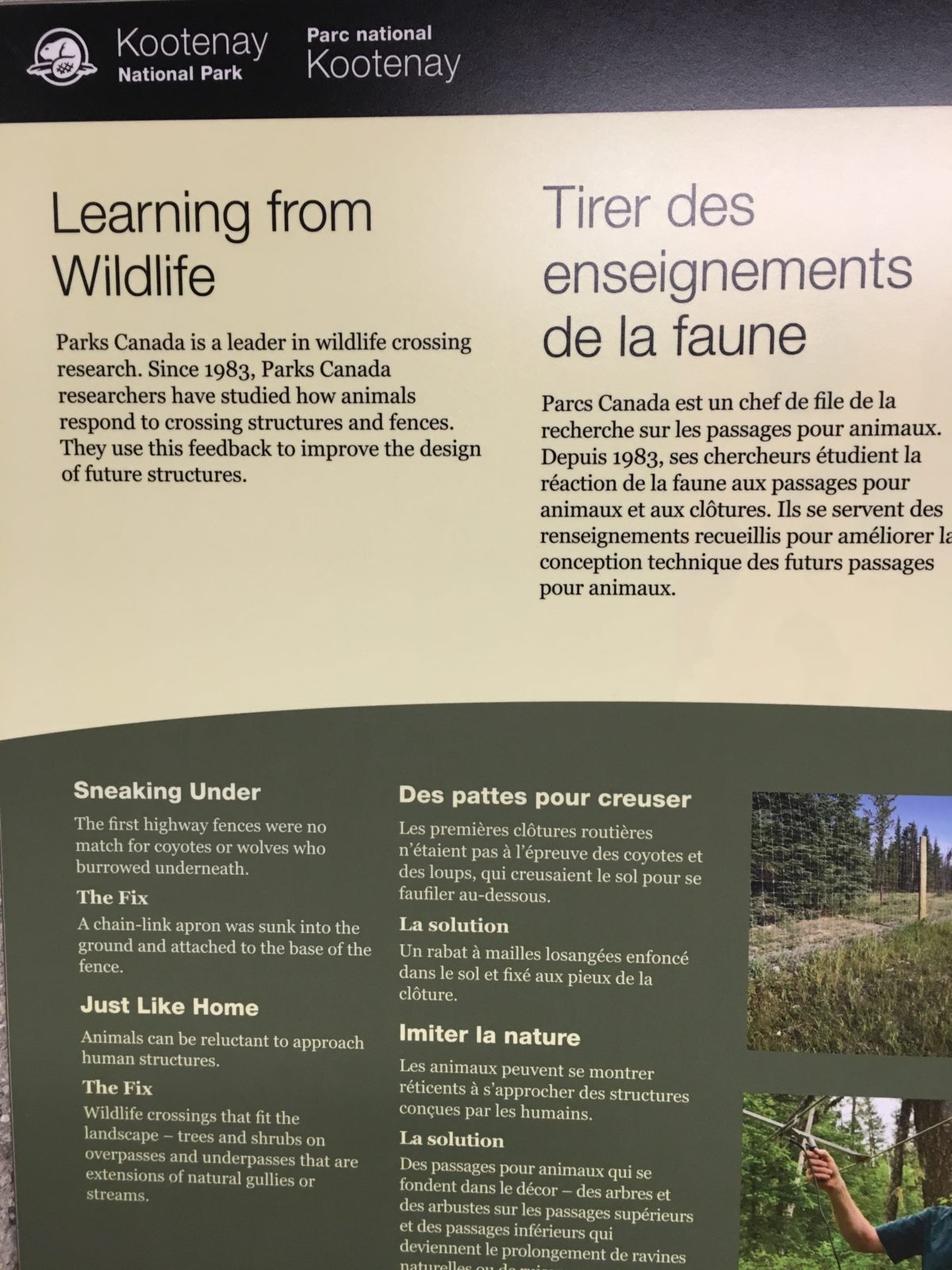
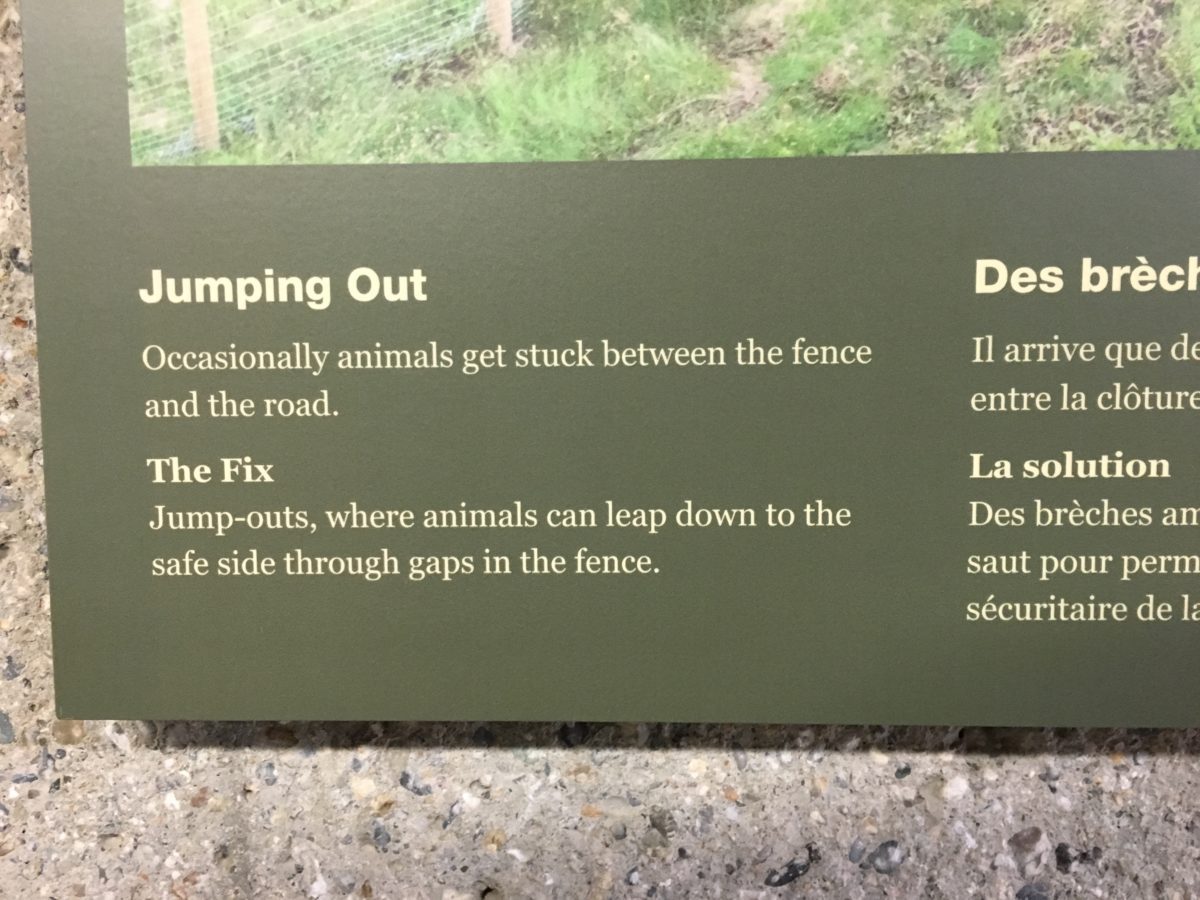
Learning Through Trial and Error: The Animals
There is a “learning curve” for animals to begin using wildlife crossings. Some animals – like grizzly bears and wolves – may take up to five years before they feel secure enough to use the crossings.
Interestingly enough, elk were the first large species to use the crossings.
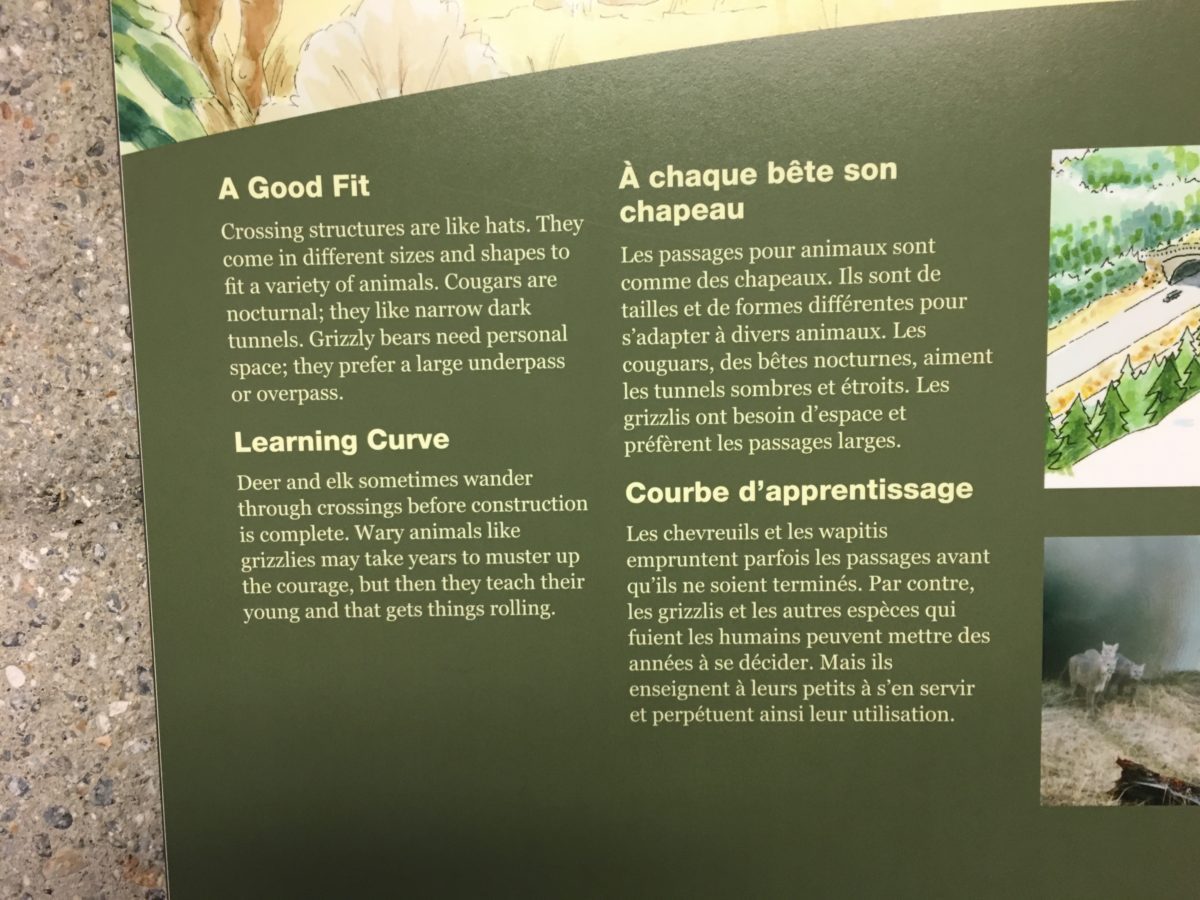
Grizzly bears, elk, moose and deer seem to prefer wildlife crossings that are high, wide and short in length, such as the overpasses.
Black bears and cougars seem to prefer long, low and narrow crossings like the underpasses.
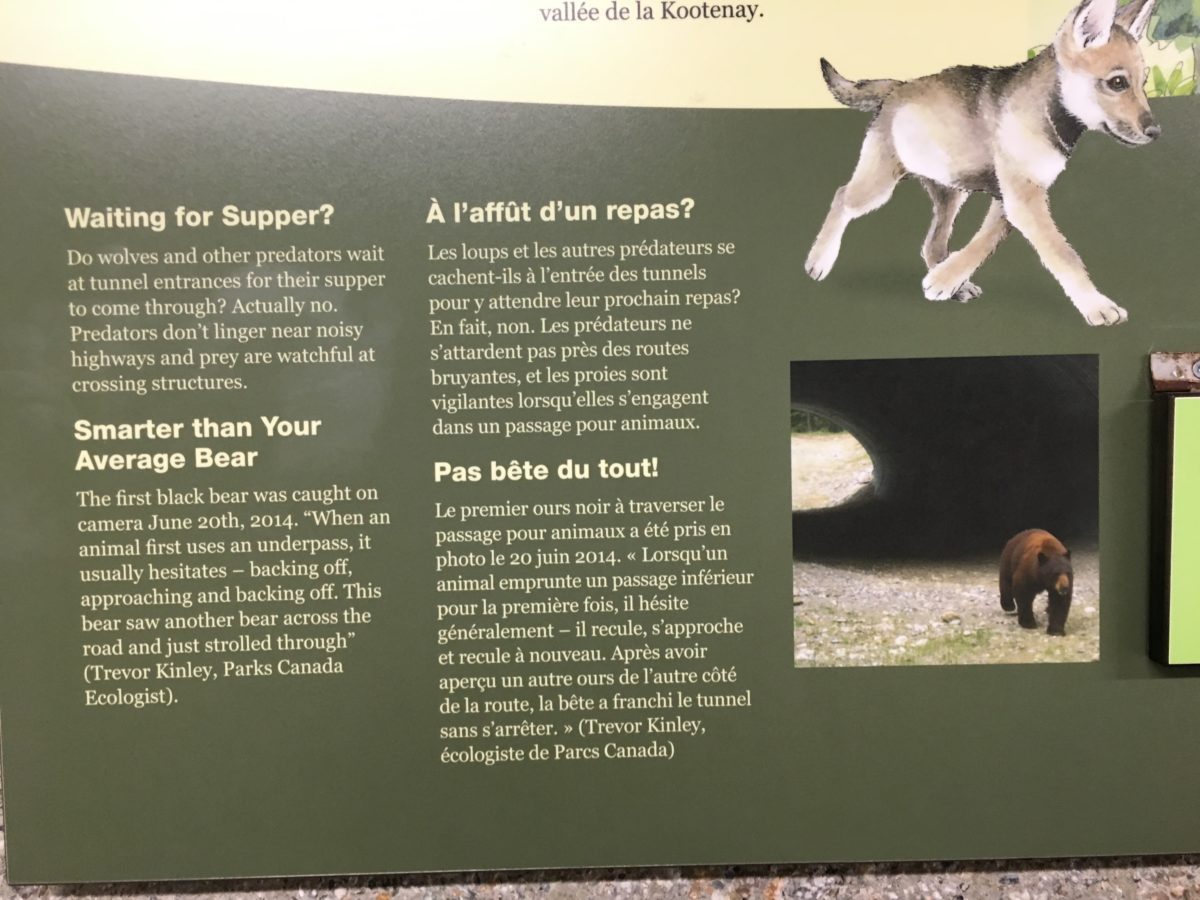
Final Thoughts: The Best Idea In Wildlife Conservation? Possibly. Here’s Why.
After 30 plus years of experience and research, Parks Canada have hit upon a very successful model for large mammal wildlife conservation. More importantly, this model is replicable across similar habitats.
There’s really no reason similar underpasses and overpasses can’t be used in nations with similar wildlife – such as the United States, Russia, Norway, Sweden, Finland, Japan, etc. Thankfully, Parks Canada have already done the hard work and research, so the only barrier to wildlife crossings in other countries is political will.
Thanks to Canada’s handwork and ecological values, there is still a chance for the large mammals of the world to survive and thrive.
Cheers!
